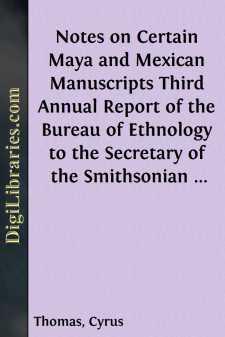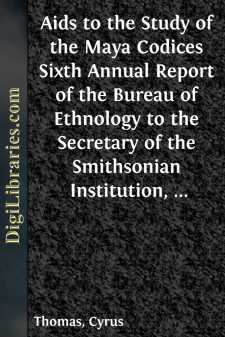Categories
- Antiques & Collectibles 13
- Architecture 36
- Art 48
- Bibles 22
- Biography & Autobiography 813
- Body, Mind & Spirit 142
- Business & Economics 28
- Children's Books 13
- Children's Fiction 10
- Computers 4
- Cooking 94
- Crafts & Hobbies 4
- Drama 346
- Education 46
- Family & Relationships 57
- Fiction 11828
- Games 19
- Gardening 17
- Health & Fitness 34
- History 1377
- House & Home 1
- Humor 147
- Juvenile Fiction 1873
- Juvenile Nonfiction 202
- Language Arts & Disciplines 88
- Law 16
- Literary Collections 686
- Literary Criticism 179
- Mathematics 13
- Medical 41
- Music 40
- Nature 179
- Non-Classifiable 1768
- Performing Arts 7
- Periodicals 1453
- Philosophy 64
- Photography 2
- Poetry 896
- Political Science 203
- Psychology 42
- Reference 154
- Religion 513
- Science 126
- Self-Help 84
- Social Science 81
- Sports & Recreation 34
- Study Aids 3
- Technology & Engineering 59
- Transportation 23
- Travel 463
- True Crime 29
Cyrus Thomas
Cyrus Thomas (1825–1910) was an American ethnologist and archaeologist known for his pioneering work in the study of the ancient mound builders of North America. He contributed significantly to the field with his work "Report on the Mound Explorations of the Bureau of Ethnology," where he provided evidence debunking the myth that the mounds were built by a lost civilization separate from Native Americans. Thomas also explored Mayan hieroglyphics and Central American archaeology during his career. His research helped advance the understanding of indigenous cultures and their historical significance in North America.
Author's Books:
Sort by:
by:
Cyrus Thomas
“TABLEAU DES BACAB.” Having recently come into possession of Leon de Rosny’s late work entitled “Les Documents ecrits de l’Antiquite Americaine,” I find in it a photo-lithographic copy of two plates (or rather one plate, for the two are but parts of one) of the Maya Manuscript known as the Codex Cortesianus. This plate (I shall speak of the two as one) is of so much importance in the study...
more...
by:
Cyrus Thomas
INTRODUCTORY As the origin and signification of the day and month, names of the Maya calendar, and of the symbols used to represent these time periods, are now being discussed by students of Mexican and Central American paleography, I deem it advisable to present the result of my investigations in this line. The present paper, however, will be limited to the days only, as I have but little to add in...
more...
by:
Cyrus Thomas
INTRODUCTION. The object of this paper is to present to students of American paleography a brief explanation of some discoveries, made in regard to certain Maya codices, which are not mentioned in my previous papers relating to these aboriginal manuscripts. It is apparent to every one who has carefully studied these manuscripts that any attempt to decipher them on the supposition that they contain true...
more...




